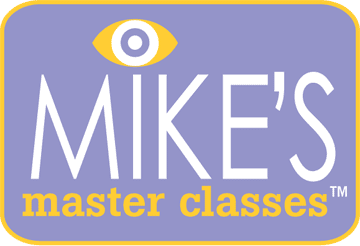Description
Class Contents Includes:
Lenny Breau Style: How to Comp While Soloing Class Content | Steve Herberman
Breau’s use of 2 and 3 note comping chords while he played melodies was a big leap forward for guitarists. Learn the techniques Lenny used to achieve this swinging jazz piano sound and play some of his favorite phrases and comping chords.
“I was aware of the idea of voicing partial chords on the lower strings while soloing on the higher strings, but this class really got me started on using his concept RIGHT AWAY! What seemed nearly impossible is now a regular part of my playing style.”
~ Lindsey Blair
“Another inspiring class from Steve. Packed with clear and musical examples and a practical approach that got me using this technique straight away. The benefits of this approach go well beyond the skill of accompanying yourself, as it is extremely useful for building voicings that, having 3 and 7 at the bottom, will support well any extension. This technique comes up time and time again in Steve’s classes (and his playing), for example in his comping in 4/4 class, when he talks about building voicings ‘on the fly’ by adding to the 3&7 block. Highly recommended!”
~ Nico S.
- 3 Pages in PDF
- Class Length is 1hr 35min
| Lenny Breau Style: How to comp while soloing | |||
| Lenny Breau Style: How to comp while soloing | 01:35:00 | ||
Applications of Triad Motion Studies Inspired by George Van Eps Class Content | Steve Herberman
Steve Herberman is considered one of the specialists of George van Eps and Lenny Breau. His van Eps courses have received high praises from students all around the world!
“I often get requests to demonstrate how Van Eps’ triad studies in Harmonic Mechanism’s can be applied to comping and soloing as well as chord/melody. “
“In this masterclass we’ll see how his multi-line triadic approach can add depth and interest to triads and upper structure triads. If you’ve never worked through Van Eps’ books than this class could be a real eye-opener.”
“If you’ve checked out Harmonic Mechanisms and need a fresh look at how to put the concepts into practical use over tunes than don’t miss this masterclass!”
~ Steve Herberman
George van Eps and Lenny Breau inspired courses by Steve Herberman
| Applications of Triad Motion Studies Inspired by George Van Eps | |||
| Applications of Triad Motion Studies Inspired by George Van Eps | 01:31:00 | ||
Chord melody arranging & soloing inspired by George Van Eps Class Content | Steve Herberman
Utilizing ideas for voice motion and chord substitution inspired by George van Eps, Steve will take the often played “Autumn Leaves” and send out a chord melody arrangement in the Van Eps style. Discussions of techniques used and full explanations of the entire arrangement will be given.As usual all questions will be answered on the spot! To encourage early registration Steve will include a bonus arrangement of “Autumn Leaves” arranged in 2 part counterpoint that will demonstrate soloing above a half note bassline and also a melody line. The former helps deal with the question “After I play the head, now what?” Improvising chord melody can be one of the most gratifying of endeavors. It kept George Van Eps playing steadily into his 80’s!
View Clips from this class
| Chord melody arranging & soloing inspired by George Van Eps | |||
| Chord melody arranging & soloing inspired by George Van Eps | 01:31:00 | ||
Motion and Chord Voicings – Part I Class Content | Steve Herberman
Joe Pass always talked about the importance of motion as it pertains to solo guitar. In this Master Class, Steve illustrates techniques to create motion using common chord forms. You and he will begin with triads and create lines in parallel and contrary motion while maintaining some common chord tones. After examining many kinds of voice motion within one chord, you’ll apply these concepts to a progression. This is in essence what the George Van Eps volumes were all about: looking at chords as several voices forging ahead over time to arrive at familiar destinations along the way. You’ll be pleasantly surprised to discover many new shapes getting from one chord form to another by sending the voices in motion. Steve will also show the application of these principles over familiar standard tunes. You will never look at those chord forms the same way!
View a clip from this class
| Motion and Chord Voicings - Part I | |||
| Motion and Chord Voicings – Part I | 01:37:00 | ||
Motion and Chord Voicings – Part II Class Content | Steve Herberman
George Van Eps used to say that “Guitarists put too damn many notes in their chords.” In this class we’ll heed the maestro’s advice and examine 10th intervals with a moving inner line. Also, we’ll look at other intervals such as 6th’s and 12th’s with inner line motion and apply these to a progression. Exercises outlining these principles will be provided, allowing you to become more familiar with the techniques necessary to play these smoothly. It’s a refreshing approach to enhance your chord melody playing.
| Motion and Chord Voicings - Part II | |||
| Motion and Chord Voicings – Part II | 01:26:00 | ||




Reviews
There are no reviews yet.